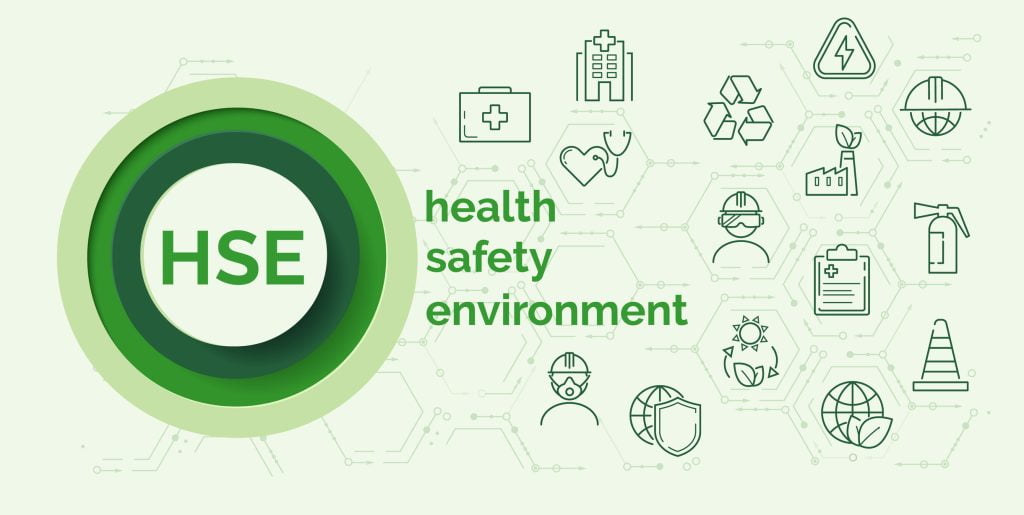Why It Is Imperative To Adopt Best Practices In EHS
EHS, encompassing Environment, Health, and Safety, constitutes a comprehensive framework crucial for safeguarding employees, the public, and the environment from potential workplace hazards. It encapsulates an array of elements, including laws, regulations, professions, and programs dedicated to ensuring the well-being of individuals and the ecological surroundings associated with workspaces. Particularly vital in manufacturing facilities, where safety is paramount, an effective EHS program serves as the cornerstone for maintaining a secure and healthy workplace.
Within organizations, EHS programs play a pivotal role in risk management, aiming to identify, assess, and control potential hazards within the workplace. These initiatives extend beyond risk mitigation, incorporating extensive training for employees. The training encompasses understanding and navigating workplace hazards, fostering a culture of safety, and emphasizing the importance of working in a manner that protects not only individual safety but also that of colleagues and the broader community.
So, EHS programs serve as proactive measures, not only adhering to regulatory requirements but also promoting a culture of responsibility and accountability. By prioritizing safety and health, organizations not only create a secure working environment but also contribute to the broader goal of sustainable and responsible business practices. EHS stands as a beacon for organizations aspiring to balance productivity with a commitment to the welfare of their workforce and the communities they operate in.
Importance Of Adopting Best Practices In EHS

Protecting Health and Safety of Employes
The implementation of an Environmental, Health, and Safety (EHS) program is paramount, primarily for the protection of employees within manufacturing facilities. These environments inherently harbor a multitude of potential risks, including exposure to hazardous chemicals, operation of heavy machinery, and repetitive motions, making them susceptible to accidents and injuries. Without robust safety protocols, these risks can escalate, leading to severe consequences such as illnesses, injuries, or, tragically, fatalities.
Historical workplace incidents like the Triangle Shirtwaist Fire (1911) serve as stark reminders of the imperative need for EHS efforts.
Prominent examples of catastrophic incidents, such as the Bhopal/Union Carbide in explosion, the Upper Big Branch Mine-South explosion, the BP Deepwater Horizon oil spill, and the Savar building collapse, in 1984, 2010, 2010 and 2013 respectively, underscore the real and devastating consequences of inadequate safety measures. These incidents serve as poignant reminders of the vital role EHS programs play in preventing and mitigating potential disasters.
Beyond averting tragic outcomes, EHS programs convey a genuine concern for employee well-being, fostering a positive workplace culture. Actively embracing EHS initiatives sends a powerful message to employees, demonstrating that their safety is a top priority. This, in turn, not only reduces the frequency of incidents but also enhances employee morale, retention rates, and overall productivity.
Increasing Employee Loyalty
Cultivating an EHS-focused culture within an organization goes beyond mere compliance; it establishes an environment where employees feel valued and secure. This positive workplace atmosphere not only boosts morale and retention rates but also creates an effect that positively influences hiring efforts and the overall reputation of the organization. Employees who perceive their well-being as a priority are more likely to be engaged, productive, and committed to the company’s success.
Numerous case studies substantiate the tangible benefits of EHS programs, showcasing their capacity to transform the workplace into a safer, more sustainable, and employee-centric space. The investment in EHS initiatives not only mitigates risks but also aligns with ethical business practices, contributing to long-term success and positive brand image. Importantly, an active EHS culture extends its impact to customer loyalty.
In today’s conscientious consumer landscape, individuals often scrutinize a company’s commitment to environmental, health, and safety practices before making purchasing decisions. Companies with robust EHS programs stand out as responsible corporate citizens, attracting consumers who prioritize ethical and sustainable business practices. This alignment of values between the company and its customers builds trust, brand loyalty, and positive word-of-mouth, ultimately enhancing the bottom line.
Risk Mitigation
Implementing an Environmental, Health, and Safety (EHS) program serves as a good strategy to mitigate risks and prioritize the well-being of employees. Such practices include a range of measures aimed at safeguarding individuals within the workplace.
- From providing essential Personal Protective Equipment (PPE) to comprehensive training on equipment usage and the proper handling of hazardous materials, an EHS program ensures that employees are well-informed and equipped to navigate potential risks.
- Furthermore, creating a culture of safety within the facility is a fundamental aspect of an effective EHS program. This involves creating an environment where employees feel empowered to voice concerns about potential hazards without fear of reprisal.
Encouraging open communication ensures that all team members are vigilant in identifying risks and are aware of the necessary steps to take in the event of an emergency. This approach not only minimizes the likelihood of accidents but also establishes a sense of collective responsibility, creating a workplace culture where safety is a shared priority.
Ultimately, an EHS program goes beyond compliance; it creates a comprehensive framework that empowers employees, mitigates risks, and establishes a foundation for a secure and health-conscious work environment.
Positive Impact on Business
Prioritizing an Environmental, Health, and Safety (EHS) program not only safeguards employees but also yields substantial benefits for the overall business. By emphasizing safety, an organization significantly reduces the risk of workplace accidents and injuries, mitigating the potential financial ramifications of costly lawsuits, worker’s compensation claims, and lost productivity.
- A safe and healthy workplace contributes to elevated employee morale, diminishing turnover rates, and enhancing the company’s attractiveness to new talent, thereby fostering a positive and productive work environment.
- Compliance with EHS standards, especially in manufacturing, extends beyond legal requirements; it positions the business as environmentally conscious. This commitment to eco-friendly practices enhances the company’s reputation, resonating positively with a growing segment of environmentally-aware consumers.
Moreover, the impact of incorporating best practices of EHS is evident in its ability to save lives and money. The program achieves this by identifying and addressing workplace and environmental hazards, ensuring strict adherence to local, state, and federal EHS laws and regulations, providing comprehensive employee training on hazard management, and developing an effective, all-encompassing EHS program. Ultimately, integrating EHS practices into business operations not only aligns with ethical and legal responsibilities but also translates into a resilient, socially responsible, and financially sustainable enterprise.
EHS-The Ultimate Platform to Protect Workers’ Rights

The adoption of best practices in Environmental, Health, and Safety (EHS) emerges as an indispensable component for organizations, particularly in manufacturing. As discussed, EHS practices play a pivotal role in safeguarding employees, preventing workplace accidents, and mitigating risks associated with hazardous environments. Historical incidents and catastrophic examples underscore the imperative need for robust EHS efforts. Beyond compliance, these programs create a culture of responsibility, positively influencing employee morale, retention rates, and productivity.
The beneficial effects of EHS extends to customer loyalty, enhancing an organization’s reputation as a responsible corporate citizen. Importantly, EHS practices contribute to risk mitigation, providing employees with the tools and knowledge to navigate potential hazards. From a business perspective, prioritizing EHS not only reduces financial liabilities but also positions the company favorably in the eyes of environmentally-conscious consumers. Ultimately, integrating EHS practices into the organizational framework reflects a commitment to safety, sustainability, and responsible business practices, ensuring a resilient and socially responsible future.




